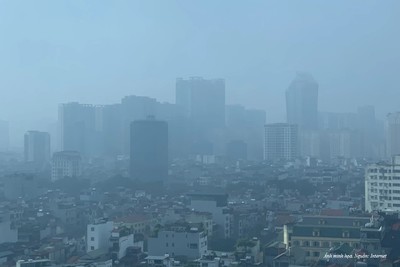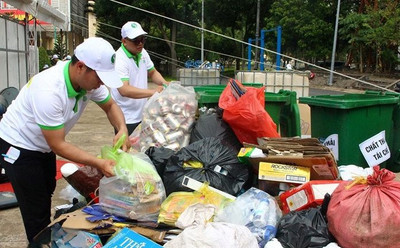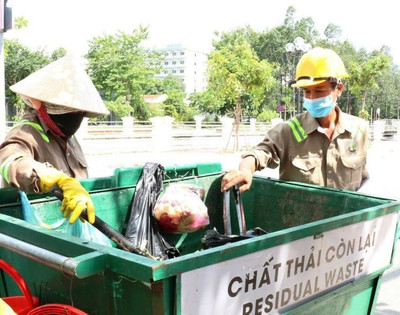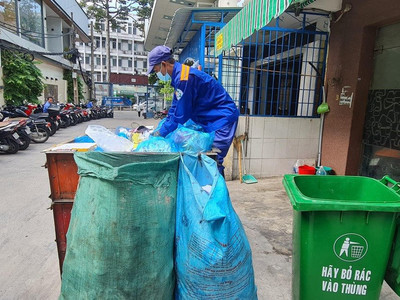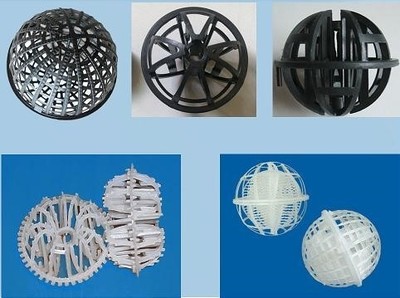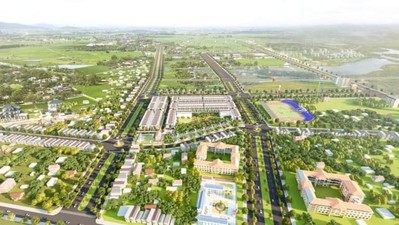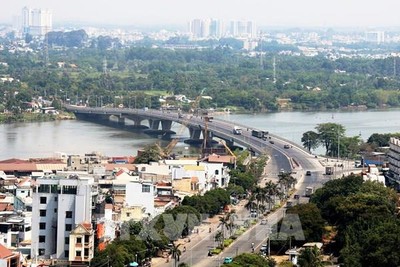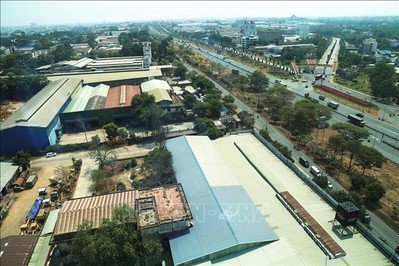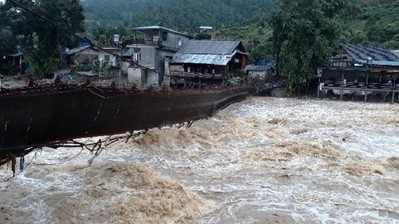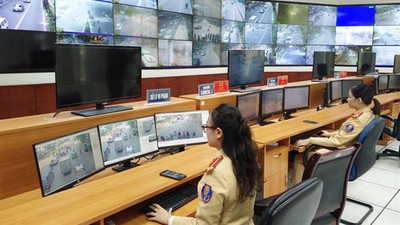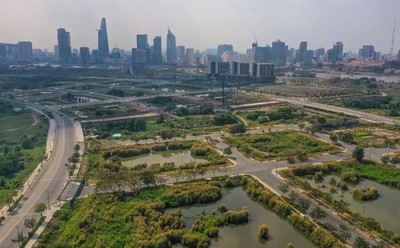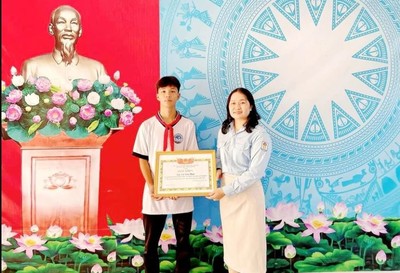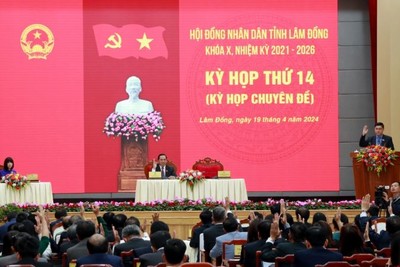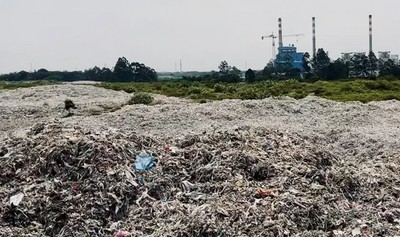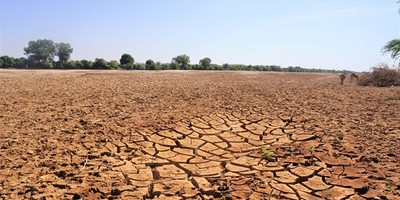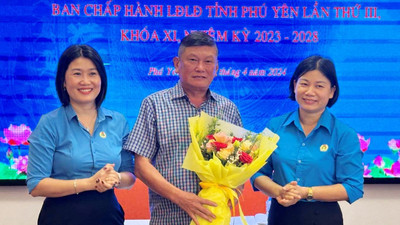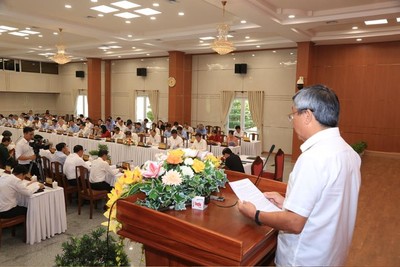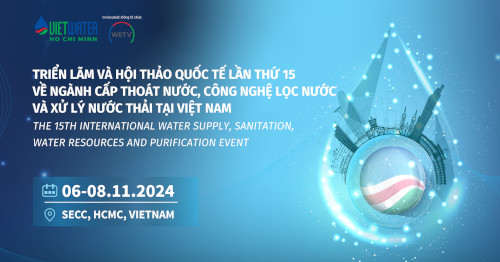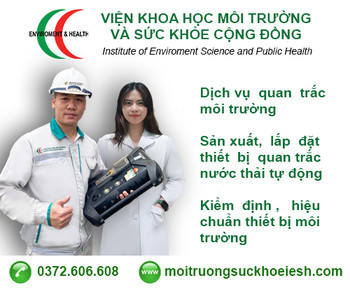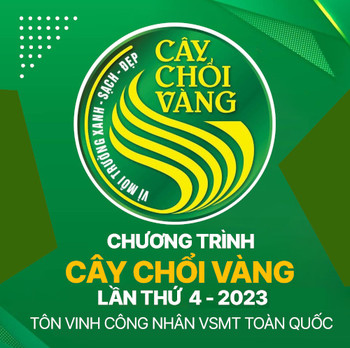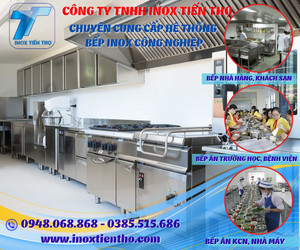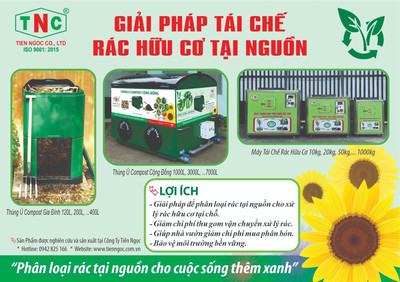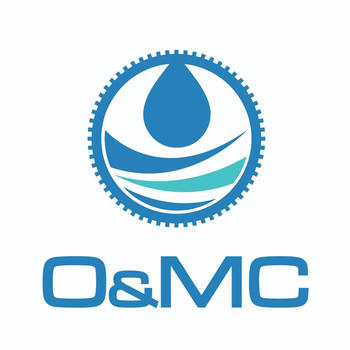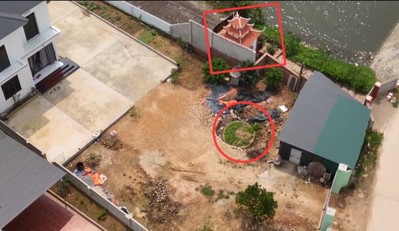Công bố Quốc tế lĩnh vực môi trường số 6-2022
Trân trọng giới thiệu tới quý độc giả Công bố Quốc tế lĩnh vực môi trường số 6-2022 với những công trình nghiên cứu của các nhà khoa học nổi tiếng trên thế giới.
Trong đó có 19 bài nghiên cứu về quản lý môi trường, 15 bài về môi trường đô thị và 15 bài viết về môi trường khu công nghiệp.
Đặc biệt trong số 15 bài nghiên cứu về môi trường khu công nghiệp có nghiên cứu "Các sản phẩm chuyển hóa của dược phẩm trong môi trường: Số phận của chúng, độc tính (sinh thái) và khả năng tích lũy sinh học”, được đăng trên trang công bố khoa học quốc tế uy tín Science of The Total Environment, số 802 ngày 1/1/2022.
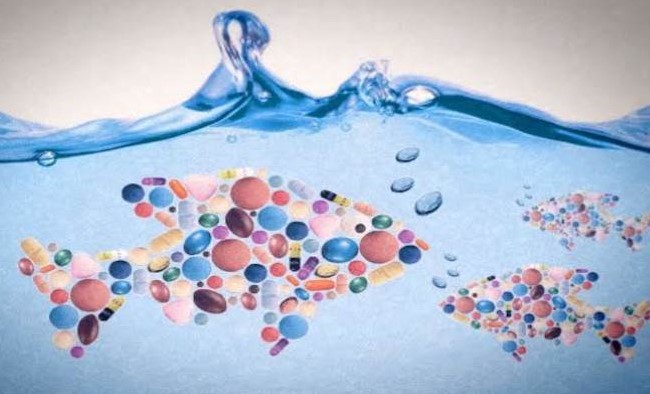
Trong phần tóm tắt nghiên cứu, các tác giả cho biết: Ngày nay, giới khoa học đang dành sự quan tâm lớn đến các chất hóa học phổ biến, có thể gây ra rủi ro đáng kể cho con người và toàn bộ hệ sinh thái. Trong số đó, tồn dư dược phẩm là một nhóm hóa chất được điều tra rộng rãi.
Trong những năm gần đây, người ta đã nhiều lần chứng minh rằng dược phẩm có trong môi trường và một số trong số chúng có thể gây độc cho sinh vật cũng như tích tụ trong mô của chúng. Mặc dù kiến thức về sự hiện diện, số phận và các mối đe dọa có thể gây ra bởi các dạng dược phẩm gốc là khá rộng rãi, nhưng các sản phẩm chuyển hóa của chúng (TPs) vẫn bị xem nhẹ trong một thời gian dài. Kể từ vài năm gần đây, khía cạnh này đã được khoa học chú ý nhiều hơn và các bài báo được xuất bản gần đây đã chứng minh sự hiện diện phổ biến của chúng trong môi trường. Ngoài ra, mối quan tâm về độc tính, sự tập trung sinh học và tính ổn định của chúng trong môi trường đã tăng lên. Do đó, mục đích của bài báo của nghiên cứu là cập nhật và đánh giá hiện trạng các hiểu biết về số phận và ảnh hưởng của các loại thuốc chuyển hóa dược phẩm hiện diện trong môi trường.
Trong nghiên cứu của mình, các nhà khoa học đã đưa ra các ý kiến về các chất chuyển hóa của các hợp chất thuộc 6 nhóm dược phẩm chính: SSRI, thuốc chống ung thư, thuốc kháng sinh, thuốc kháng histamine, NSAID và opioid, đồng thời thảo luận thêm về các hợp chất riêng lẻ khác. Các dữ liệu được trình bày trong bài báo đã chứng minh rằng một số dược phẩm chuyển hóa có thể có hại như dạng gốc của chúng. Tuy nhiên đối với nhiều nhóm thuốc, dữ liệu này chưa đủ để đánh giá rủi ro của chúng trong môi trường.
Trân trọng giới thiệu tới độc giả những nội dung chính như sau:
Về quản lý môi trường
- Những thách thức và cơ hội trong xử lý sinh học đối với nhựa micro-nano: Đánh giá.
- Phong tỏa do COVID-19 cải thiện chất lượng nước sông ở Trung Quốc.
- Các yếu tố rủi ro và chiến lược đánh giá để đánh giá rủi ro về con người hoặc môi trường do kim loại (loid) - Trọng tâm ở Ireland.
- Phương pháp tiếp cận mạng lưới nhân quả theo không gian để phân tích và lập bản đồ rủi ro đa tác nhân để đánh giá tác động môi trường.
- Cải thiện cung cấp dịch vụ hệ sinh thái cung cấp thông tin chi tiết về quy hoạch cảnh quan bền vững: Một nghiên cứu điển hình ở Bắc Kinh, Trung Quốc.
- Các phương pháp xử lý hóa học hiện tại và tương lai để chống lại sự suy giảm sinh học của vật liệu xây dựng ngoài trời và các màng sinh học liên quan: Tránh xa chất độc sinh thái và hướng tới các giải pháp hiệu quả, bền vững.
- Khung quản lý rủi ro cho các Tùy chọn Xử lý Nhẹ nhàng (GRO).
- Lộ trình hợp tác củng cố hệ thống nước và vệ sinh.
- Tăng tốc giảm thiểu ô nhiễm không khí ở Trung Quốc, 2017-2020.
- Đường cong Carbon Kuznets trong hoạt động xây dựng của Trung Quốc: Quỹ đạo hồi cứu và tương lai.
Về môi trường đô thị
- Lò phản ứng sinh học màng kỵ khí (AnMBRs) để xử lý nước thải đô thị - những lợi ích tiềm năng, những hạn chế và viễn cảnh trong tương lai: Một đánh giá cập nhật.
- Thiết kế lấy mẫu không gian tối ưu để giám sát ô nhiễm các yếu tố độc hại tiềm ẩn trên đất không gian xanh đô thị: Phương pháp tiếp cận tích hợp mô phỏng không gian và ủ.
- Các nguồn phân giải theo chiều dọc và sự hình thành thứ cấp của các hạt mịn: Một nghiên cứu về siêu khí cầu có dây buộc có độ phân giải cao ở Thượng Hải.
- Chất lượng không khí trong nhà chủ quan và sự thoải mái nhiệt ở người lớn liên quan đến các yếu tố môi trường trong nhà được kiểm tra và đo lường trong các ngôi nhà một gia đình ở Thụy Điển - nghiên cứu của BETSI.
- Vòng đời của nhựa nano siêu nhỏ trong nước thải sinh hoạt.
- Ảnh hưởng của chỉ số dựa trên âm thanh của con người đối với cảnh quan âm thanh của không gian mở đô thị.
- Động học của sự phân hủy xenluloza hiếu khí trong nước thải thô của thành phố.
- Đánh giá một loạt các chất vi lượng hữu cơ đang được quan tâm trong các nhà máy xử lý nước thải ở Hy Lạp: Sự xuất hiện, loại bỏ, tải trọng và rủi ro tiềm ẩn.
- Ước tính năng suất thuần sơ cấp trên mặt đất của các cây rừng được trồng lại trong cảnh quan đô thị bằng cách sử dụng các biến số lý sinh và dữ liệu cảm biến từ xa.
- Phân lập và xác định các chủng vi tảo có tiềm năng là nhà sản xuất carotenoid từ bãi chôn lấp chất thải rắn thành phố.
Về môi trường khu công nghiệp
- Chiến lược tồn tại của vi khuẩn comammox trong hệ thống loại bỏ chất dinh dưỡng trong nước thải với chất lỏng lên men bùn làm nguồn cacbon bổ sung.
- Các sản phẩm chuyển hóa của dược phẩm trong môi trường: Số phận của chúng, độc tính (sinh thái) và khả năng tích lũy sinh học.
- Xác định theo hướng hiệu quả của các hợp chất thơm hoạt động với thụ thể aryl hydrocacbon mới trong trầm tích ven biển được thu thập từ một khu vực công nghiệp hóa cao.
- Tương tác khu vực của tỷ lệ mắc ung thư phổi bị ảnh hưởng bởi PM2.5 ở Trung Quốc.
- Hiệu suất chuyển đổi năng lượng trong quá trình cacbon hóa đồng nhiệt dịch của bùn thải và mùn cưa gỗ thông kết hợp với quá trình phân hủy kỵ khí của nước thải sản xuất.
- Mạng lưới thương mại toàn cầu và gia công phần mềm phát thải CH4.
- Lanthanum hydroxit được thiết kế bằng than sinh học từ bùn thải để loại bỏ photphat hiệu quả: Giải thích cơ chế sử dụng mô hình vật lý.
- Đánh giá rủi ro PBDE và PCB trong bụi từ một khu tái chế chất thải điện tử của Trung Quốc.
- Ma trận phát xạ kích thích huỳnh quang như một chỉ thị mới của cacbon hữu cơ có thể đồng hóa trong nước thải: Hàm ý từ nghiên cứu nước thải hóa chất than.
- Nuôi cấy các hạt khử nitrat một phần được điều khiển bằng sunfua để tạo nitrit hiệu quả từ nước thải chứa nhiều nitrat-sunfua.
Dưới đây là tên và phần tóm tắt các bài nghiên cứu bằng tiếng Anh:
QUẢN LÝ MÔI TRƯỜNG
1. Challenges and opportunities in bioremediation of micro-nano plastics: A review
Science of The Total Environment, Volume 802, 1 January 2022, 149823
Abstract
Rising level of micro-nano plastics (MNPs) in the natural ecosystem adversely impact the health of the environment and living organisms globally. MNPs enter in to the agro-ecosystem, flora and fauna, and human body via trophic transfer, ingestion and inhalation, resulting impediment in blood vessel, infertility, and abnormal behaviors. Therefore, it becomes indispensable to apply a novel approach to remediate MNPs from natural environment. Amongst the several prevailing technologies of MNPs remediation, microbial remediation is considered as greener technology. Microbial degradation of plastics is typically influenced by several biotic as well as abiotic factors, such as enzymatic mechanisms, substrates and co-substrates concentration, temperature, pH, oxidative stress, etc. Therefore, it is pivotal to recognize the key pathways adopted by microbes to utilize plastic fragments as a sole carbon source for the growth and development. In this context, this review critically discussed the role of various microbes and their enzymatic mechanisms involved in biodegradation of MNPs in wastewater (WW) stream, municipal sludge, municipal solid waste (MSW), and composting starting with biological and toxicological impacts of MNPs. Moreover, this review comprehensively discussed the deployment of various MNPs remediation technologies, such as enzymatic, advanced molecular, and bio-membrane technologies in fostering the bioremediation of MNPs from various environmental compartments along with their pros and cons and prospects for future research.
2. COVID-19 lockdown improved river water quality in China
Science of The Total Environment, Volume 802, 1 January 2022, 149585
Abstract
The impacts of COVID-19 lockdowns on air quality around the world have received wide attention. In comparison, assessments of the implications for water quality are relatively rare. As the first country impacted by COVID-19, China implemented local and national lockdowns that shut down industries and businesses between January and May 2020. Based on monthly field measurements (N = 1693) and daily automonitoring (N = 65), this study analyzed the influence of the COVID-19 lockdown on river water quality in China. The results showed significant improvements in river water quality during the lockdown period but out-of-step improvements for different indicators. Reductions in ammonia nitrogen (NH4+-N) began relatively soon after the lockdown; chemical oxygen demand (COD) and dissolved oxygen (DO) showed improvements beginning in late January/early February and mid-March, respectively, while increases in pH were more temporally concentrated in the period from mid-March to early May. Compared to April 2019, the Water Quality Index increased at 67.4% of the stations in April 2020, with 75.9% of increases being significant. Changes in water quality parameters also varied spatially for different sites and were mainly determined by the locations and levels of economic development. After the lifting of the lockdown in June, all water quality parameters returned to pre-COVID-19 lockdown conditions. Our results clearly demonstrate the impacts of human activities on water quality and the potential for reversing ecosystem degradation by better management of wastewater discharges to replicate the beneficial impacts of the COVID-19 lockdown.
3. Risk factors and assessment strategies for the evaluation of human or environmental risk from metal(loid)s – A focus on Ireland
Science of The Total Environment, Volume 802, 1 January 2022, 149839
Abstract
Elevated human exposure to metals and metalloids (metal(loid)s) may lead to acute sickness and pose a severe threat to human health. The human body is exposed to metal(loid)s principally through food, water, supplements, and (occasionally) air. There are inherent background levels of many metal(loid)s in regional soils as a consequence of geological sources. Baseline levels coupled with anthropogenic sources such as regional application of biosolids may lead to increased levels of certain metal(loid)s in soil, leading to potential transfer to water sources and potential uptake by plants. The latter could potentially transfer into the feed-to-food chain, viz. grazing animals, and bio-transfer to food products resulting in human exposure. This study addresses health concerns due to excessive intake of metal(loid)s by conducting a traditional review of peer-reviewed journals between 2015 and 2019, secondary references and relevant websites. The review identified the most researched metal(loid)s as Cu, Zn, Pb, Cd, Ni, Cr, As, Hg, Mn, Fe in the environment. The potential uptake of metal(loid)s by plants (phytoavailability) is a function of the mobility/retainability of metal(loid)s in the soil, influenced by soil geochemistry. The most critical parameters (including soil pH, soil organic matter, clay content, cation exchange capacity, the capability of decomposition of organic matter by microbes, redox potential, ionic strength) influencing metal(loid)s in soil are reviewed and used as a foundation to build a framework model for ranking metal(loid)s of concern. A robust quantitative risk assessment model is recommended for evaluating risk from individual metal(loid)s based on health-based indices (Daily Dietary Index (DDI), No Observed Adverse Effect Level (NOAEL), and Lowest Observed Adverse Effect Level (LOAEL)). This research proposes a risk assessment framework for potentially harmful metal(loid)s in the environment and highlights where regulation and intervention may be required.
4. A spatial causal network approach for multi-stressor risk analysis and mapping for environmental impact assessments
Science of The Total Environment, Volume 802, 1 January 2022, 149845
Abstract
Environmental impact assessment (EIA) relies on rigorous scientific assessment of all potential causal pathways by which large-scale developments may impact on valued assets in a region. Despite their importance to informed decision-making, many EIAs are flawed by incomplete analysis of causal pathways, limited spatial assessment and a lack of transparency about how risks have been evaluated across the region.
To address these, we describe an EIA methodology based on network analysis of potential causal pathways in a given region. This network approach is coupled with a systematic evaluation of the likelihood, consequence and mitigation options for each causal pathway from one or more human activities to multiple valued assets. The method includes analysis of the confidence in these evaluations, recognizing where knowledge gaps constrain assessments of risks to particular assets.
The causal network approach is complemented by a spatially explicit analysis of the region that allows residual risk (i.e. risk remaining after all feasible mitigations) to be mapped for all valued assets. This identifies which activities could lead to potential impacts of varying concern (rated from ‘very low’ to ‘very high’), their likely pathways, which valued assets are at risk and where these residual risks are greatest. The output maps reveal ‘risk hotspots’ where more detailed local-scale assessments and monitoring should focus.
The method is demonstrated by application to potential impacts on 8 valued assets (aquifers, ecosystems and protected species) due to unconventional gas resource development in the Cooper Basin, central Australia. Results show which activities and causal pathways are of potential concern to different valued assets and where residual risk is greatest for particular species and ecosystems.
This spatial causal network provides a systematic, consistent and transparent assessment of potential impacts, improving the quality of decision-making about planned developments and their environmental risks.
5. Improving ecosystem services supply provides insights for sustainable landscape planning: A case study in Beijing, China
Science of The Total Environment, Volume 802, 1 January 2022, 149849
Abstract
Promoting land use planning through ecosystem service (ES) protection is a crucial approach for maintaining landscape sustainability. Identifying ES bundles to serve landscape functional zoning can provide a new perspective for sustainable land use planning. Taking the Beijing metropolitan region as a study area, we quantitatively assessed the spatiotemporal distributions of multiple ESs, from 1980 to 2017, based on land use changes. By combining ES patterns and comprehensive ecosystem service (CES), distinct ES bundles were identified through the clustering method. Based on the ES bundles, landscape functional zones were then established. We further developed improved land use scenarios to conserve ESs in selected towns of different functional zones by exploring dominant factors influencing ESs. Results showed that most of ESs decreased due to the expansion of developed lands. According to the classification of ES bundles, Beijing can be classified into three landscape functional zones at town level: the ecological conservation region (ECR), food production region (FPR), and urban development region (UDR). For each landscape functional zone, the town with the greatest decline in CES value was selected. Associated with the influencing factors of ESs, local land use patterns, and ecological protection policies, corresponding multi-step improved land use scenarios were designed. These scenarios were demonstrated to be effective in conserving ESs in the selected towns: (1) the agricultural expansion scenario, which enhanced food provision services in the ECR; (2) the forest conservation scenario, which enhanced habitat and recreational services in the FPR; and (3) the developed land optimization scenario, which enhanced a range of regulating services in the UDR. Overall, this study used landscape functional zoning as a nexus to connect ES patterns and land use management. The optimized land use strategies can provide references for conserving ESs and enhancing landscape sustainability in Beijing and other similar metropolitan areas worldwide.
6. Current and future chemical treatments to fight biodeterioration of outdoor building materials and associated biofilms: Moving away from ecotoxic and towards efficient, sustainable solutions
Science of The Total Environment, Volume 802, 1 January 2022, 149846
Abstract
All types of building materials are rapidly colonized by microorganisms, initially through an invisible and then later a visible biofilm that leads to their biodeterioration. Over centuries, this natural phenomenon has been managed using mechanical procedures, oils, or even wax. In modern history, many treatments such as high-pressure cleaners, biocides (mainly isothiazolinones and quaternary ammonium compounds) are commercially available, as well as preventive ones, such as the use of water-repellent coatings in the fabrication process. While all these cleaning techniques offer excellent cost-benefit ratios, their limitations are numerous. Indeed, building materials are often quickly recolonized after application, and microorganisms are increasingly reported as resistant to chemical treatments. Furthermore, many antifouling compounds are ecotoxic, harmful to human health and the environment, and new regulations tend to limit their use and constrain their commercialization. The current state-of-the-art highlights an urgent need to develop innovative antifouling strategies and the widespread use of safe and eco-friendly solutions to biodeterioration. Interestingly, innovative approaches and compounds have recently been identified, including the use of photocatalysts or natural compounds such as essential oils or quorum sensing inhibitors. Most of these solutions developed in laboratory settings appear very promising, although their efficiency and ecotoxicological features remain to be further tested before being widely marketed. This review highlights the complexity of choosing the adequate antifouling compounds when fighting biodeterioration and proposes developing case-to-case innovative strategies to raise this challenge, relying on integrative and multidisciplinary approaches.
7. A risk management framework for Gentle Remediation Options (GRO)
Science of The Total Environment, Volume 802, 1 January 2022, 149880
Abstract
Gentle Remediation Options (GRO) are remediation measures involving plants, fungi, bacteria, and soil amendments that can be applied to manage risks at contaminated sites. Several studies and decision-support tools promote the wider range of benefits provided by GRO, but there is still skepticism regarding GRO implementation. Key issues that need to be better communicated are the various risk mitigation mechanisms, the required risk reduction for an envisioned land use, and the time perspective associated with the risk mitigation mechanisms. To increase the viability and acceptance of GRO, the phytomanagement approach implies the combination of GRO with beneficial green land use, gradually reducing risks and restoring ecosystem services. To strengthen the decision basis for GRO implementation in practice, this paper proposes a framework for risk management and communication of GRO applications to support phytomanagement strategies at contaminated sites. The mapping of the risk mitigation mechanisms is done by an extensive literature review and the Swedish national soil guideline value model is used to derive the most relevant human health exposure pathways and ecological risks for generic green land use scenarios. Results indicate that most of the expected risk mitigation mechanisms are supported by literature, but that knowledge gaps still exist. The framework is demonstrated to support the identification of GRO options for the case study site given two envisioned land uses: biofuel park and allotment garden. A more easily understandable risk management framework, as proposed here, is expected to act as a communication tool to educate decision-makers, regulatory bodies and other stakeholders for better understanding of risk mitigation mechanisms and preliminary timeframes of various GRO, particularly in the early stages of a brownfield redevelopment project.
8. Pathways for collaboratively strengthening water and sanitation systems
Science of The Total Environment, Volume 802, 1 January 2022, 149854
Abstract
Collaborative approaches are seen as a promising way to strengthen Water, Sanitation, and Hygiene (WASH) service delivery systems when challenges exceed the mandates and capabilities of any single entity. While collaborative approaches are well studied in high-income country contexts, current understanding of their application to international development contexts is limited. This paper uses fuzzy-set Qualitative Comparative Analysis to assess what conditions and pathways drove or impeded progress within eleven collaborative approaches for WASH service delivery in Eastern Africa. Evidence supported three main findings: (1) Government uptake of recommendations is necessary for progress but cannot be guaranteed solely by government participation in the collaboration, (2) different forms of problem identification are possible; problem scopes are often predefined to align with funders and partner government agendas, but flexible scopes that foster collective problem identification can reap benefits, and (3) hub convening power can be critical and convening power can be gained in different ways. Political dynamics, shifting priorities, and turnover undermine collaborative efforts, but collaborative approaches can still make progress in spite of turnover if funds are available for implementation of activities (i.e. in addition to funds for meetings and hub roles) and program implementers either facilitate collective problem identification or establish a hub with convening power. Yet even these tactics are vulnerable to instability, thus in highly unstable contexts, stakeholders and funders should be realistic from the outset about what they may be able to achieve. Building on existing theories of collaborative approaches, this work revealed that there is no single best design for collaborative approaches in WASH, rather, core elements worked together in different ways depending on the context.
9. Accelerated reduction of air pollutants in China, 2017-2020
Science of The Total Environment, Volume 803, 10 January 2022, 150011
Abstract
Emission regulations of the power and industry sectors have been identified as the major driver of PM2.5 mitigation over China during 2013-2017. In this study, we use ground-based observations of four air pollutants (CO, NO2, SO2, and PM2.5) to show that additional stringent emission policies on the industrial, transportation, and residential sectors during the new 3-year protection plan (2018-2020) have accelerated the improvement of China's air quality.
Based on regional (North and South China) trends of annual mean measurements, significant reductions are observed for all four pollutants during 2017-2020. These decreasing trends are found to be >30% stronger than 2015-2017 for NO2, CO, and PM2.5. For CO and PM2.5, the acceleration is the strongest in winter and North China, when and where the residential clean-heating actions were implemented. While for NO2, the accelerations are pronounced regardless of region or season, reflecting nationwide measures to reduce NOx emissions from industrial and transportation activities. SO2 concentration reductions that were already substantial before 2017 are maintained but not accelerated, consistent with the dominance of end-of-pipe measures rather than a structural change of energy fuels. Our investigation highlights the value of multi-pollutant analysis to relate emission policies with air quality changes.
10. Carbon Kuznets curve in China's building operations: Retrospective and prospective trajectories
Science of The Total Environment, Volume 803, 10 January 2022, 150104
Abstract
China has pledged to achieve peak carbon emissions by 2030 and to be carbon neutral by the mid-century, and buildings will be the "last mile” sector in the transition to carbon neutrality. To help buildings hit the carbon peak goal, we investigate the different emission scales of carbon emission changes of residential and commercial building operations across 30 provinces in China through the carbon Kuznets curve (CKC) model. We observe that (1) more than three-quarters of the samples can be fitted by the CKC model. Most CKCs are the inverted U-shaped, residential and commercial buildings occupying 93% and 90% at the total emission scale, respectively. In addition, the remains can be illustrated as N-shaped curves. (2) Under the premise of CKCs existence, approximately half of the provincial residential and commercial buildings peak at different emission scales, except for emission per floor space (residential: 89%; commercial: 81%). Provinces with better economic development have a higher peaking probability. In the total emissions, the peaking probability in residential buildings is 33% and 50% for provinces with economic indicators <20,000 Chinese Yuan and 30,000-40,000 Chinese Yuan, respectively, and 22% and 67% for commercial buildings, respectively. (3) Taking carbon intensity as a case study, decoupling analysis examines the robustness of the CKC estimation. Overall, we close the gap of the CKC estimation in commercial and residential buildings, and the proposed methods can be treated as a tool for other economies to illustrate the retrospective and prospective trajectories of carbon emissions in building operations.
11. Temporal trends of perfluoroalkyl substances in an Australian wastewater treatment plant: A ten-year retrospective investigation
Science of The Total Environment, Volume 804, 15 January 2022, 150211
Abstract
Per- and poly-fluoroalkyl substances (PFAS) are a problematic group of chemicals used in various industrial and household products. They have been extensively detected in wastewater as a result of day-to-day product usage. Due to concerns about their safety, voluntary and regulatory action to limit the manufacture and use of some individual PFAS has occurred since the year 2000. The impact that this intervention has had on the use and potential exposure of Australians has not been measured. Wastewater serves as a powerful tool to assess the chemical use or consumption patterns of a population over time. We accessed a ten-year wastewater archiving program to conduct a temporal analysis of PFAS trends in an urban Australian population between the years 2010 and 2020. Results showed a decline in the concentrations for most PFAS, and a change in the PFAS profile from perfluorosulfonic acids and long-chain perfluorocarboxylic acids, to the short-chain perfluorocarboxylic acids and PFOS-replacement degradation products such as 5:3 FTCA. Intermittent pulses of PFAS that were significantly higher than ‘background’ levels (i.e., representing the PFAS input from primarily households) were observed, suggesting continuing industrial PFAS input within the wastewater catchment. This study highlights the long-term consequences of the diffuse use of persistent chemicals in products, and their ability to continue to enter the wastewater stream for decades.
12. New indices system for quantifying the nexus between economic-social development, natural resources consumption, and environmental pollution in China during 1978 - 2018
Science of The Total Environment, Volume 804, 15 January 2022, 150180
Abstract
It is meaningful to study how China can maintain the sustainable utilization of natural resources and the continuous improvement of environmental conditions while ensuring the stable development of the economy and society. In this study, a new indices system was proposed for the analysis of nexus among social-economic-natural resource-environment complex systems following the DPSIR (Driving Force - Pressure - State - Impact - Respond) framework, CCD (Coupling Coordination Degree) analysis and VAR (Vector Auto-Regressive) model were applied for quantifying the synergy and trade-off of China in the nexus framework. Results showed that: (1) Although China's rapid development has caused big consumption of natural resources and increasing pollutants discharges during 1978–2018, China has not got into trouble of extreme resource depletion and ecosystem collapse. On the contrary, China guaranteed food supply, stopped forest degradation, and avoided pollution-induced healthy crises & life-shortening. (2) Adjustment of water pollution industries and the increase of wastewater treatment investment contributed 39% and 37% to the reduction of water pollutant discharge, respectively. The contribution of energy structure adjustment to acid rain control was 26%. The pollutants discharged in no less than 70% of the provinces are strictly controlled below the environmental capacity. The increase of fertilizer application and effective irrigated area contributed 32% to China's grain increase, and China's grain self-sufficiency rate has been maintained above 110%. The improvement of the water-saving irrigation rate contributed 28% to the reduction of water consumption. The reduction of comprehensive efficiency contributed 23.8% to the decrease in energy consumptions per GDP. The CCD assessment showed that China has entered a phase of pre-eminently coordinated development since 2013.
13. Wastewater surveillance to infer COVID-19 transmission: A systematic review
Science of The Total Environment, Volume 804, 15 January 2022, 150060
Abstract
Successful detection of SARS-COV-2 in wastewater suggests the potential utility of wastewater-based epidemiology (WBE) for COVID-19 community surveillance. This systematic review aims to assess the performance of wastewater surveillance as early warning system of COVID-19 community transmission. A systematic search was conducted in PubMed, Medline, Embase and the WBE Consortium Registry according to PRISMA guidelines for relevant articles published until 31st July 2021. Relevant data were extracted and summarized. Quality of each paper was assessed using an assessment tool adapted from Bilotta et al.'s tool for environmental science. Of 763 studies identified, 92 studies distributed across 34 countries were shortlisted for qualitative synthesis. A total of 26,197 samples were collected between January 2020 and May 2021 from various locations serving population ranging from 321 to 11,400,000 inhabitants. Overall sample positivity was moderate at 29.2% in all examined settings with the spike (S) gene having maximum rate of positive detections and nucleocapsid (N) gene being the most targeted. Wastewater signals preceded confirmed cases by up to 63 days, with 13 studies reporting sample positivity before the first cases were detected in the community. At least 50 studies reported an association of viral load with community cases. While wastewater surveillance cannot replace large-scale diagnostic testing, it can complement clinical surveillance by providing early signs of potential transmission for more active public health responses. However, more studies using standardized and validated methods are required along with risk analysis and modelling to understand the dynamics of viral outbreaks.
14. SARS-CoV-2 wastewater surveillance data can predict hospitalizations and ICU admissions
Science of The Total Environment, Volume 804, 15 January 2022, 150151
Abstract
We measured SARS-CoV-2 RNA load in raw wastewater in Attica, Greece, by RT-qPCR for the environmental surveillance of COVID-19 for 6 months. The lag between RNA load and pandemic indicators (COVID-19 hospital and intensive care unit (ICU) admissions) was calculated using a grid search. Our results showed that RNA load in raw wastewater is a leading indicator of positive COVID-19 cases, new hospitalization and admission into ICUs by 5, 8 and 9 days, respectively. Modelling techniques based on distributed/fixed lag modelling, linear regression and artificial neural networks were utilized to build relationships between SARS-CoV-2 RNA load in wastewater and pandemic health indicators. SARS-CoV-2 mutation analysis in wastewater during the third pandemic wave revealed that the alpha-variant was dominant. Our results demonstrate that clinical and environmental surveillance data can be combined to create robust models to study the on-going COVID-19 infection dynamics and provide an early warning for increased hospital admissions.
15. Design and construction strategies to improve covalent organic frameworks photocatalyst's performance for degradation of organic pollutants
Chemosphere, Volume 286, Part 1, January 2022, 131646
Abstract
Covalent organic frameworks (COFs) are a class of crystalline porous organic polymers. In recent years, COFs have received extensive attention in the field of photocatalytic degradation due to their large specific surface area, good thermal and solvent stability, and diverse structures. This review studies the progress of COF in the field of photocatalytic degradation, and summarizes the strategies to improve the photocatalytic activity of covalent organic frameworks, including the designs of ligands and structures. In particular, the design and construction of the COF composites (COF/MOF, COF/g-C3N4, COF/metal semiconductor) are discussed. The photocatalytic mechanism is described in detail, and the prospect of COFs in photocatalytic degradation is prospected.
16. A hybrid instrument for China's post-2020 mitigation commitments: A sectoral coverage perspective
Journal of Cleaner Production, Volume 332, 15 January 2022, 130033
Abstract
Sectoral coverage is a chief challenge in the design of carbon mitigation policies, this paper addresses such a concern within a hybrid regulation setting in which a carbon tax is adopted for complementary regulation of emission sources outside the Emission Trading System (ETS) in China. With a focus on the efficiency of the hybrid system, the regulated sectors are identified by linkage analysis and the resulting price changes is captured by the input-output (I-O) price model. The simulation shows that, in terms of the price incentives, the proposed carbon tax is a necessary complement to the ETS, in respect of both magnitude and structure. As a result, a mixed policy setting can be expected to have an efficiency advantage over the ETS alone. Understanding of the joint determination of the sectoral coverage and the corresponding price incentive effect is a new contribution to the theoretical literature on designing market-based carbon policies, which has substantial policy implication for the future design of instruments targeted at achieving China’s post-2020 mitigation commitments.
17. The interaction effects of technological innovation and path-dependent economic growth on countries overall green growth performance
Journal of Cleaner Production, Volume 333, 20 January 2022, 130134
Abstract
There are numerous studies on utilizing a variety of green growth indicators to monitor and assess green growth performance, but there is little research on the influence of a country's green product development on its overall green growth performance. This study uses the concept of the Product Space (PS) network and its main hypothesis of path-dependent economic growth to fill this research gap. The path-dependent economic growth hypothesis argues that countries can grow their economy by increasing the types of products they produce and export, and that these new products should be developed based on countries' existing productive capabilities such as skills, institutions, capital, and technologies. However, recent studies show that countries do not restrict themselves to their existing productive capabilities to develop new products, as they increase human capital endowment and heavily invest in Technological Innovation (TI) to develop new products. The goal of this study is to better understand the relationship between path-dependent economic growth and heavy investment driven growth in the context of green economic performance. We construct a model using Partial Least Square - Structural Equation Modeling (PLS-SEM) to investigate the relation of TI and green product development, based on the path-dependent economic growth hypothesis, on Countries' Overall Green Growth Performance (COGGP). The constructed model uses TI and green product empirical data compiled by the Organization for Economic Cooperation and Development (OECD) of 61 countries, including both OECD and non-OECD members, from 2003 to 2015. This study evaluates three hypotheses: the first hypothesis (H1) is confirmed, suggesting that TI has a positive and significant effect on COGGP; the second hypothesis (H2) is not confirmed, in that the results show that TI has a positive and significant impact on Path-Dependent Green Product Development (PDGPD), which is aligned with the concept of the PS network and its main hypothesis of path-dependent economic growth; the third hypothesis (H3) is confirmed, suggesting that PDGPD has a positive and significant effect on COGGP. The findings of this study provide empirical evidence to support the role of TI and the PS network and its hypothesis of path-dependent economic growth in advancing COGGP. Furthermore, the findings indicate that while TI is a crucial factor that fosters COGGP and PDGPD, it is not enough to enable countries to go beyond their existing productive capabilities to produce new green products; therefore, along with productive capabilities, TI is another factor that countries should consider while developing their policy agendas for producing new green products. Based on these findings, this study proposes some policy actions that can be considered by policy makers and researchers to promote green growth in countries around the world.
18. Water-smart circular economy – Conceptualisation, transitional policy instruments and stakeholder perception
Journal of Cleaner Production, Volume 334, 1 February 2022, 130065
Abstract
The Circular Economy (CE) is a concept that has gained considerable global attention during the past decade amongst private and public sector actors, politicians and policymakers, citizens and media, and scientific communities. Water and water-related ecosystems, despite their vital role in practically all human activities, have been largely missing from conceptualisations and scientific definitions of the CE. Therefore, this paper presents a definition and concept for a water-smart CE that incorporates water and water-related ecosystems. A water-smart CE would (i) reduce losses of water, energy and valuable substances, (ii) improve water efficiency and productivity, (iii) reuse treated wastewater, and (iv) better protect and lessen pressure upon water-related (both aquatic and groundwater) ecosystems. The paper also touches upon the potential risks of the CE to water-related ecosystems. Policy instruments that could be used to promote a transition towards a water-smart CE in Finland – the setting of the present study – and beyond were also sought. Additionally, actors who provide and/or use water-smart CE solutions were interviewed to shed light on their perceptions about the drivers of, barriers to and potential policy instruments for promoting a transition towards a water-smart CE. Based on the analyses of policy instruments and stakeholder interviews, a mixed use of economic, regulatory and informative instruments is suggested to support the desired transition towards a water-smart CE in Finland and elsewhere.
19. Air pollution and economic growth under local government competition: Evidence from China, 2007 - 2016
Journal of Cleaner Production, Volume 334, 1 February 2022, 130231
Abstract
This study employs spatial simultaneous equations models with the Generalized Spatial Three-Stage Least Squares (GS3SLS) method to evaluate the interrelationship between economic growth and air pollution under local government competition for China's "2 + 26” cities from 2007 to 2016. The results show an unbalanced spatial agglomeration effect of economic growth and air pollution across the region. Findings indicate that air pollution accompanies economic growth in the "2 + 26” cities, and economic growth has a U-shaped relationship with air pollution. Moreover, tax income and foreign investment competitions increase air pollution. Suggestions for the "2 + 26” cities include organizing a cross-regional agency for integrated management of the economy and air quality, constructing multiple economic-center cities, reforming the political promotion mechanism, and developing the ecological compensation mechanism for air pollution.
MÔI TRƯỜNG ĐÔ THỊ
1. Anaerobic membrane bioreactors (AnMBRs) for municipal wastewater treatment- potential benefits, constraints, and future perspectives: An updated review
Science of The Total Environment, Volume 802, 1 January 2022, 149612
Abstract
The application of Anaerobic Membrane Bioreactors (AnMBRs) for municipal wastewater treatment has been made sufficiently sustainable for practical implementations. The potential benefits are significant as AnMBRs effectively remove a broad range of contaminants from wastewater for water reuse, degrade organics in wastewater to yield methane-rich biogas for resultant energy production, and concentrate nutrients for subsequent recovery for fertilizer production. However, there still exist some concerns requiring vigilant considerations to make AnMBRs economically and technically viable. This review paper briefly describes process fundamentals and the basic AnMBR configurations and highlights six major factors which obstruct the way to AnMBRs installations affecting their performance for municipal wastewater treatment: (i) organic strength, (ii) membrane fouling, (iii) salinity build-up, (iv) inhibitory substances, (v) temperature, and (vi) membrane stability. This review also covers the energy utilization and energy potential in AnMBRs aiming energy neutrality or positivity of the systems which entails the requirement to further determine the economics of AnMBRs. The implications and related discussions have also been made on future perspectives of the concurrent challenges being faced in AnMBRs operation.
2. Science of The Total Environment
Volume 802, 1 January 2022, 149630
Science of The Total Environment
Local emissions and secondary pollutants cause severe PM2.5 elevation in urban air at the south edge of the North China Plain: Results from winter haze of 2017–2018 at a mega city
Abstract
Severe haze occurrence in the north of the North China Plain (NCP) is recognized as a consequence of the regional transport of pollutants initially from the south and then the rapid formation of secondary pollutants in the local air. However, the origin of pollutants causing haze in the southern NCP has not yet been elucidated even through careful data observation. Based on the contents of water-soluble inorganic ions in PM2.5 samples collected during two severe haze episodes in Zhengzhou, a mega city located on the southern edge of the NCP, we estimated the contributions of local primary emissions and secondary pollutants to haze occurrence. On average, Na+, K+, and Ca2+ mainly originated from anthropogenic sources, and their anthropogenic fractions had proportions of 97.5%, 93.9%, and 76.5% in their respective total mass. Anions Cl− and SO42− substantially originated from not only produced substantially via secondary formation but also from primary emissions, and their primary proportions in their respective total mass were 51.1% and 30.8%. In contrast, NH4+ and NO3− were dominated by secondary formation. The increase in PM2.5 was mainly caused by the formation of secondary inorganic (29.1%) and organic species (57.2%) and the primary anthropogenic emissions (12.5%). These results indicated that the haze at the southern edge of the NCP was mainly caused by pollutants in the local areas. Compared to the haze in the northern NCP, the haze in the southern NCP edge had a higher PM2.5 mass concentration and a higher proportion of secondary species, but a lower proportion of primary species, indicating the high heterogeneity of winter haze over the NCP.
3. Optimal spatial sampling design for monitoring potentially toxic elements pollution on urban green space soil: A spatial simulated annealing and k-means integrated approach
Science of The Total Environment, Volume 802, 1 January 2022, 149728
Abstract
Sampling design in soil science is critical because the lack of reliable methods and collecting samples requires tremendous work and resources. The aims were to obtain an optimal sampling design for assessing potentially toxic elements pollution using pilot Pb soil samples from the urban green space area of Shanghai, China. Two general steps have been used. The first step is to determine the optimum sample size against improving the prediction accuracy and monitoring costs using the spatial simulated annealing (SSA) algorithm. Secondly, we evaluated their likely placement of new extra sampling points by integrated SSA with k-means (SSA+ k-means) and expert-based (SSA+ expert-based) sampling methods. The improvement of sampling design by the integrated sampling approaches was evaluated using mean kriging variance (MKV), root mean square error (RMSE), and mean absolute percentage error (MAPE). The findings indicated that adding and placing 350 new monitoring points upon the existing sampling design by SSA increased the prediction accuracy by 64.35%. The MKV for the optimized SSA+ k-means sample was lower than by 4.12 mg/kg, 9.46 mg/kg compared with locations optimized by SSA and SSA+ expert-based method, respectively. Optimizing new sampling locations by SSA+ k-means sampling method was reduced MAPE by 9.26% and RMSE by 7.13 mg/kg compared to optimizing by SSA alone. However, there was no improvement in placing the new sampling points in SSA+ expert-based sampling method; instead, it increased the error by 8.11%. This paper shows integrating optimization approaches to evaluate the existing sampling design and optimize a new optimal sampling design.
4. Vertically-resolved sources and secondary formation of fine particles: A high resolution tethered mega-balloon study over Shanghai
Science of The Total Environment, Volume 802, 1 January 2022, 149681
Abstract
Numerous studies have focused on air pollution near the surface in China, yet we still have little knowledge on the characteristics, formation mechanisms, and sources of air pollutants aloft. Based on a tethered mega-balloon platform, the vertical profiles of PM2.5, black carbon (BC), SO2, O3, and meteorological parameters were measured within the lower troposphere of 1000 m over Shanghai. One clean and slightly polluted period (CP) and one heavily polluted period (HP) with continuously measured profiles were compared. The potential source areas of PM2.5 at different altitudes during HP were determined based on the time-lag spatial correlation analysis, indicating the surrounding regions were the main sources of low-altitude particles in Shanghai and farther regions of northern China significantly affected the upper atmosphere. By apportioning the sources of vertical BC profiles, fossil fuel combustion contributed >80% to BC below 600 m during HP, exhibiting a higher contribution than CP. An indicator (i.e. SA/SO2, SA represents secondary aerosols) was established to investigate the vertical evolution of secondary aerosol formation. During CP, relatively low SA/SO2 ratios were observed within the boundary layer due to the weak atmospheric processing. SA/SO2 profiles showed the opposite vertical trend of higher ratios below about 600 m while lower values at high altitudes during HP. Regional and long-range transport regulated the extents of secondary aerosol formation. Northeasterlies transported abundant aged aerosols from northern China while sea breezes suppressed the columnar secondary aerosol formation. This study provided insights into the vertical structures of typical air pollutants in a Chinese megacity and implied that high-resolution measurements of atmospheric vertical profiles were valuable for diagnosing sources and potential secondary formation of fine particles.
5. Subjective indoor air quality and thermal comfort among adults in relation to inspected and measured indoor environment factors in single-family houses in Sweden-the BETSI study
Science of The Total Environment, Volume 802, 1 January 2022, 149804
Abstract
Totally 1160 adults living in single-family houses in Sweden participated in a questionnaire survey on subjective indoor air quality (SIAQ). Inspectors investigated the dwellings and performed home measurements (mean indoor temperature 21.4 °C, mean indoor air humidity 34.2%, mean indoor air exchange rate 0.36 ac/h and mean moisture load indoor 1.7 g/m3). Totally 15.5% perceived draught, 28.0% perceived too high room temperature, 42.4% unstable room temperature, 36.8% too low room temperature, 19.6% stuffy air, 19.8% dry air and 29.9% dust or dirt.
Measured room temperature was related to perception of room temperature. Higher relative air humidity was related to perceived unstable room temperature (OR = 1.70) and too low room temperature (OR = 1.96). Higher absolute air humidity was related to too high room temperature (OR = 1.21), unstable room temperature (OR = 1.34) and too low room temperature (OR = 1.35). Higher measured relative humidity, absolute air humidity and moisture load were all associated with stuffy air and unpleasant odor (OR = 1.45–1.97). Higher air exchange rate was related to less perceived unstable room temperature (OR = 0.93). Higher U value was related to draught (OR = 1.17), too low room temperature (OR = 1.09), unpleasant odor (OR = 1.12) and dust and dirt (OR = 1.07). New concrete slab foundation was related to less stuffy air (OR = 0.39) (vs. basement). Damp foundation was associated with more stuffy air (OR = 1.44) and unpleasant odor (OR = 1.61). Window pane condensation was related to stuffy air (OR = 1.88). Moldy odor reported by inspector was related to stuffy air (OR = 1.73). Observed mold in the attic was associated with more stuffy air and unpleasant odor.
In conclusion, complaints of room temperature can indicate poor thermal environment. Higher air exchange rate can create a more stable thermal sensation. Excess indoor humidity, lower degree of thermal insulation, presence of window pane condensation and indoor dampness/mold can impair SIAQ. Higher ventilation and concrete slab foundation with underlying thermal insulation can improve SIAQ.
6. The life cycle of micro-nano plastics in domestic sewage
Science of The Total Environment, Volume 802, 1 January 2022, 149658
Abstract
As a kind of novel pollutant, microplastics and nanoplastics have been commonly found in all regions of the world and have attracted widespread attention in recent years. Wastewater treatment plants are considered an important "source” and "sink” of micro-nano plastics pollution, so it is significant to study its transportation and fate in wastewater plants. This review summarizes the types and sources of micro-nano plastics in domestic wastewater and compares their removal efficiency and migration in different treatment processes in wastewater plants. The interlinkages and ecological risks among surface water, soil and atmospheric environments are also analyzed, providing a reference for future research on the impact of wastewater treatment plants on micro-nano plastics pollution.
7. Effects of a human sound-based index on the soundscapes of urban open spaces
Science of The Total Environment, Volume 802, 1 January 2022, 149869
Abstract
The ratio of the perceived extent of natural sounds to the perceived extent of traffic noise in the environment has been demonstrated to be important for soundscapes, whereas research on the influence of human sounds has been limited. To examine this influence, this study proposes a human sound-based index named the red soundscape index (RSI), which is defined as the ratio of the perceived extent of human sounds to the perceived extent of other sounds. Sound pressure levels and crowd density were collected at 41 sites in 9 urban parks, and pedestrian streets in Harbin, China, and the perceived extent of various sounds was investigated by a questionnaire survey. The results confirmed a significant positive correlation between crowd density and RSI, and the A-weighted sound pressure level increased linearly with increasing RSIn (the ratio of human sounds to natural sounds) and decreased with increasing RSIt (the ratio of human sounds to traffic noises). Interestingly, the overall soundscape assessment linearly decreases with the increase in RSIn in the range of (0.8–1.5). The relationship with RSIt first shows an increase and then a decrease in a parabolic form, in which the axis of symmetry is RSIt = 2. Correspondingly, urban open spaces can be divided into three categories based on the variation trend, and different types have significant differences in overall soundscape assessment, pleasantness, and calmness. Among these, pleasantness is the highest in the sites of natural sound predominance perception. At the same time, this factor becomes the lowest in the sites of human sound predominance perception and middle in the site of balanced perception. Consequently, RSI is expected to be useful in soundscape prediction in urban open spaces.
8. Kinetics of aerobic cellulose degradation in raw municipal wastewater
Science of The Total Environment, Volume 802, 1 January 2022, 149852
Abstract
Cellulose contributes approximately one third of the influent suspended solids to wastewater treatment plants and is a key target for resource recovery. This study investigated the temperature impact on biological aerobic degradation of cellulose in laboratory-scale sequencing batch reactors (SBR) at four different temperatures (10–33 °C) and two different solids retention times (SRT) of 15 days and 3 days. The degradation efficiency of cellulose was observed to increase with temperature and was slightly dependent on SRT (80%–90% at an SRT of 15 days, and 78%–85% at an SRT of 3 days). Hydrolysis followed 1st order kinetics, rather than the biomass dependent Contois kinetics (default in the activated sludge models), with a hydrolysis coefficient at 20 °C of 1.14 ± 0.01 day−1.
9. Assessment of a wide array of organic micropollutants of emerging concern in wastewater treatment plants in Greece: Occurrence, removals, mass loading and potential risks
Science of The Total Environment, Volume 802, 1 January 2022, 149860
Abstract
Exploring the contamination profile of multi-class emerging contaminants (ECs) in wastewater is highly desirable. To this end, the occurrence, removal, mass loading and risks associated with a large panel of pharmaceuticals and personal care products, illicit drugs, perfluorinated compounds and organophosphate flame retardants in two wastewater treatment plants (WWTPs) in the region of Thessaloniki (Greece) after a survey is illustrated. Influent and effluent wastewaters were submitted to solid phase extraction on Oasis HLB cartridges, followed by ultra-high-performance liquid chromatography Orbitrap high-resolution mass spectrometry (UHPLC–Orbitrap MS). Influent concentrations in both WWTPs were notably higher than effluent, with caffeine, acetaminophen, irbesartan and valsartan being the most ubiquitous compounds, exhibiting elevated concentrations. Average effluent concentrations ranged from below the method quantification limits (<MQL) to remarkably high values (μg L−1 scale), such as for caffeine, acetaminophen, diclofenac, irbesartan and valsartan, among others. Removal efficiencies ranged between −273% for lamotrigine and 100%, i.e., for the UV filter BP1. Notably, the polar compounds such as cytarabine, methotrexate and capecitabine were removed at a rate >80% in both WWTPs, allowing the correlation between logKow and removals. Interesting trends for the illicit drugs were revealed by means of mass loading estimation, as in the case of benzoylecgonine (71.6 mg/day/1000 inhabitants). Ecotoxicological risk assessment was evaluated for both single components and mixture, using three approaches: risk quotient (RQ), risk quotient considering frequency (RQf) and toxic units (TU). Irbesartan and telmisartan posed a high risk in all trophic levels, while fish was the most sensitive taxa for diclofenac. This work aspires to intensify the surveillance programs for the receiving water bodies, as well as to motivate the investigation of toxicity to non-target organisms.
10. Estimating aboveground net primary productivity of reforested trees in an urban landscape using biophysical variables and remotely sensed data
Science of The Total Environment, Volume 802, 1 January 2022, 149958
Abstract
Recently, urban reforestation programs have emerged as potential carbon sinks and climate mitigates in urban landscapes. Thus, spatially explicit information on net primary productivity (NPP) of reforested trees in urban environments is central to understanding the value of reforestation initiatives in the global carbon budget and climate regulation potential. To date, numerous studies have mainly focused on natural and commercial forests NPP at a regional scale based on coarse spatial resolution remotely sensed data. Generally, local scale NPP studies based on fine spatial resolution data are limited. Therefore, this study sought to estimate aboveground NPP of an urban reforested landscape using biophysical and Sentinel-2 Multispectral Imager data derived variables. Using the MOD17 model, results showed that mean NPP ranged between 6.24 Mg C ha−1 with high coefficient of determination (R2: 0.92) and low RMSE (0.82 Mg ha−1) across all reforested trees within the study area. Results also showed a considerable variation in NPP among the reforested trees, with deciduous Acacia and Dalbergia obovate species showing the highest NPP (7.62 Mg C ha−1 and 7.58 Mg C ha-1, respectively), while the evergreen Syzygium cordatum and shrub Artemisia afra had the lowest NPP (4.54 Mg C ha−1 and 5.26 Mg C ha−1). Furthermore, the multiple linear regression analysis showed that vegetation specific biophysical variables (i.e. leaf area index, Normalized Difference Vegetation Index and Fraction of Photosynthetically Active Radiation) significantly improved the estimation of reforested aboveground NPP at a fine-scale resolution. These findings demonstrate the effectiveness of biophysical and remotely sensed variables in determining NPP (as carbon sequestration surrogate) at fine-scaled reforested urban landscape. Furthermore, the utility of species biometric measurements and MOD17 model offers unprecedented opportunity for improved local scale reforestation assessment and monitoring schedules.
11. Isolation and identification of microalgal strains with potential as carotenoids producers from a municipal solid waste landfill
Science of The Total Environment, Volume 802, 1 January 2022, 149755
Abstract
Derived from their great capacity of adaptation, microalgae have several industrial applications, including pigment production for nutraceutical sector. However, the scarcity of studies on the diversity and life histories from several environments, highlight the need for more research on new species and habitats. Based on this, the present study assessed the microalgal diversity in water bodies of a municipal solid waste (MSW) landfill in Asturias (Spain). A total of 14 strains were successfully isolated and scaled up in liquid monocultures. They were identified through a combination of morphologic features with molecular assignation by DNA barcoding via the 18S and ITS1-5.8S-ITS2 genes. The results of the genetic procedures (BLAST assignments and the 18S and ITS1-5.8S-ITS2 genealogies) showed that 10 of the 14 assayed isolates were identified at the species level. The available genetic data were not sufficient for species classifications of the remaining isolates. It is possible that some might be new species not previously studied or described. Indeed, a new species, Coelastrella cogersae, was proposed in this study. Moreover, 3 of the 14 isolates (including the newly proposed species) exhibited caretogenic activity under specific conditions during the culture. These results are a great step forward in both the screening of lesser-known environments and the discovery of new sources of bioactive compounds. The study could be of great value to the nutraceutical industries and markets.
12. Nitrogen oxides (NO and NO2) pollution in the Accra metropolis: Spatiotemporal patterns and the role of meteorology
Science of The Total Environment, Volume 803, 10 January 2022, 149931
Abstract
Economic and urban development in sub-Saharan Africa (SSA) may be shifting the dominant air pollution sources in cities from biomass to road traffic. Considered as a marker for traffic-related air pollution in cities, we conducted a city-wide measurement of NO concentrations were highest in commercial/business/industrial (66 and 76 μg/m3, respectively) and high-density residential areas (47 and 59 μg/m3, respectively), compared with peri-urban locations. We observed annual means of 68 and 70 μg/m3 for NO and NO2, and a clear seasonal variation, with the mean NO2 of 63 μg/m3 (non-Harmattan) increased by 25–56% to 87 μg/m3 (Harmattan) across different site types. The NO2/NOx ratio was also elevated by 19–28%. Both NO and NO2 levels were associated with indicators of road traffic emissions (e.g. distance to major roads), but not with community biomass use (e.g. wood and charcoal). We found strong correlations between both NO2 and NO2/NOx and mixing layer depth, incident solar radiation and water vapor mixing ratio. These findings represent an increase of 25–180% when compared to a small study conducted in two high-density residential neighborhoods in Accra in 2006. Road traffic may be replacing community biomass use (major source of fine particulate matter) as the prominent source of air pollution in Accra, with policy implication for growing cities in SSA.
13. An innovative biofilter technology for reducing environmental spreading of emerging pollutants and odour emissions during municipal sewage treatment
Science of The Total Environment, Volume 803, 10 January 2022, 149966
Abstract
Wastewater treatment plants (WWTPs) are known sources of contaminants of emerging concern (CECs) spreading into the environment, as well as, of unpleasant odors. CECs represent a potential hazard for human health and the environment being pharmaceutical or biologically active compounds and they are acquiring relevance in European directives. Similarly, the public concern about odour emissions from WWTPs is also increasing due to the decreasing distance between WWTP and residential areas. This study focuses on the effectiveness of the recently developed MULESL technology (MUch LEss SLudge; WO2019097463) in removing CECs and limiting odour emissions from WWTPs. MULESL technology has been developed for its ability to reduce up to 80% the sludge production from WWTPs. However, it is ought to evaluate if the benefits coming from sludge production reduction do not invalidate CECs removal or negatively affect odour emissions. Thus, the performances of a MULESL and a conventional WWTP (flow rate of 375 m3/d and 3600 m3/d, respectively) were compared while treating the same municipal sewage.
Whereas both plants succeeded in removing the traditional gross parameters characterizing wastewaters (e.g. chemical oxygen demand, nitrogen), the MULESL was much more effective than the conventional one in terms of CECs removal for about 60% of the identified compounds showing, however, the same or lower effectiveness for about 30% and 10% of them, respectively. This result was attributed to the high sludge retention time and biomass concentration in the MULESL (enabling enrichment of slow growing microorganisms and forcing biomass to use unusual substrates, respectively), and to the biomass feature to grow in the form of biofilm and granules (favoring micropollutants absorption on biomass).
Furthermore, odour impact analysis has shown that the MULESL was characterized by a much lower impact, i.e. 45% lower than that of primary and secondary treatments of the conventional WWTP.
14. Exposure and dose assessment of school children to air pollutants in a tropical coastal-urban area
Science of The Total Environment, Volume 803, 10 January 2022, 149747
Abstract
This study estimates exposure and inhaled dose to air pollutants of children residing in a tropical coastal-urban area in Southeast Brazil. For that, twenty-one children filled their time-activities diaries and wore the passive samplers to monitor NO2. The personal exposure was also estimated using data provided by the combination of WRF-Urban/GEOS-Chem/CMAQ models, and the nearby monitoring station. Indoor/outdoor ratios were used to consider the amount of time spent indoors by children in homes and schools. The model's performance was assessed by comparing the modelled data with concentrations measured by urban monitoring stations. A sensitivity analyses was also performed to evaluate the impact of the model's height on the air pollutant concentrations. The results showed that the mean children's personal exposure to NO2 predicted by the model (22.3 μg/m3) was nearly twice to those measured by the passive samplers (12.3 μg/m3). In contrast, the nearest urban monitoring station did not represent the personal exposure to NO2 (9.3 μg/m3), suggesting a bias in the quantification of previous epidemiological studies. The building effect parameterisation (BEP) together with the lowering of the model height enhanced the air pollutant concentrations and the exposure of children to air pollutants. With the use of the CMAQ model, exposure to O3, PM10, PM2.5, and PM1 was also estimated and revealed that the daily children's personal exposure was 13.4, 38.9, 32.9, and 9.6 μg/m3, respectively. Meanwhile, the potential inhalation daily dose was 570-667 μg for PM2.5, 684-789 μg for PM10, and 163-194 μg for PM1, showing to be favourable to cause adverse health effects. The exposure of children to air pollutants estimated by the numerical model in this work was comparable to other studies found in the literature, showing one of the advantages of using the modelling approach since some air pollutants are poorly spatially represented and/or are not routinely monitored by environmental agencies in many regions.
15. GIS-based assessment for the potential of implementation of food-energy-water systems on building rooftops at the urban level
Science of The Total Environment, Volume 803, 10 January 2022, 149963
Abstract
This research develops a bottom-up procedure to assess the potential of food-energy-water (FEW) systems on the rooftops of buildings in an urban district in Spain considering the urban morphology of the built environment and obtains accurate assessments of production and developmental patterns. A multicriteria decision-making technique implemented in a geographical information system (GIS) environment was used to extract suitable rooftop areas. To implement this method, the slope (tilt), aspect (azimuth), shading, and solar radiation of the rooftops were calculated using LiDAR (Light Detection and Ranging) data and building footprints. The potential of FEW system implementation was analysed at the building and morphology levels. The results showed several differences between residential and non-residential urban morphologies. Industrial areas contained the highest productivity for FEW systems. The production was 2.51 kg of tomatoes/m2, 48 kWh of photovoltaic energy/m2, and 0.16 l of rainwater/m2. Regarding the residential urban morphologies, the more compact tents resulted in better performance. Among the FEW systems, although water could best benefit from the features of the entire roof surface, the best production results were achieved by energy. The food system is less efficient in the built environment since it requires flat roofs. The methodology presented can be applied in any city, and it is considered optimal in the European context for the development of self-production strategies for urban environments.
MÔI TRƯỜNG KHU CÔNG NGHIỆP
1. Survival strategy of comammox bacteria in a wastewater nutrient removal system with sludge fermentation liquid as additional carbon source
Science of The Total Environment, Volume 802, 1 January 2022, 149862
Abstract
Complete ammonia oxidizing (comammox) bacteria are frequently detected in wastewater biological nutrient removal (BNR) systems. This study identified "Candidatus Nitrospira nitrosa”-like comammox bacteria as the predominant ammonia oxidizers (97.5–99.4%) in a lab-scale BNR system with acetate and sludge fermentation liquid as external carbon sources. The total nitrogen and phosphorus removals of the system were 75.9% and 86.9% with minimal N2O emission (0.27%). Low ammonia concentration, mixotrophic growth potentials and metabolic interactions with diverse heterotrophs collectively contributed to the survival of comammox bacteria in the system. The recovered draft genomes of comammox bacteria indicated their potentials in using acetate and propionate but not butyrate. Acetate and propionate indeed stimulated the transcription of comammox amoA genes (up-regulated by 4.1 folds compared with no organic addition), which was positively correlated with the ammonia oxidation rate of the community (r = 0.75, p < 0.05). Comammox bacteria could provide vitamins/cofactors (e.g., cobalamin and biotin) to heterotrophs (e.g., Burkholderiaceae), and in return receive amino acids (e.g., phenylalanine and tyrosine) from heterotrophs, which they cannot synthesize. Compared with comammox bacteria, ammonia oxidizing bacteria (AOB) exhibited lower metabolic versatility, and lacked more pathways for the synthesis of amino acids and vitamin/cofactors, leading to their washout in the studied system. BNRs with comammox bacteria as the major nitrifiers hold great potentials in achieving superior performance at low aeration cost and low N2O emission and at full-scale plants.
2. Transformation products of pharmaceuticals in the environment: Their fate, (eco)toxicity and bioaccumulation potential
Science of The Total Environment, Volume 802, 1 January 2022, 149916
Abstract
Nowadays, a huge scientific attention is being paid to the chemicals of emerging concern, which may pose a significant risk to the human and whole ecosystems. Among them, residues of pharmaceuticals are a widely investigated group of chemicals. In recent years it has been repeatedly demonstrated that pharmaceuticals are present in the environment and that some of them can be toxic to organisms as well as accumulate in their tissues. However, even though the knowledge of the presence, fate and possible threats posed by the parent forms of pharmaceuticals is quite extensive, their transformation products (TPs) have been disregarded for long time. Since last few years, this aspect has gained more scientific attention and recently published papers proved their common presence in the environment. Also the interest in terms of their toxicity, bioconcentration and stability in the environment has increased. Therefore, the aim of our paper was to revise and assess the current state of knowledge on the fate and effects resulting from the presence of the pharmaceuticals' transformation drugs in the environment. This review discusses the metabolites of compounds belonging to six major pharmaceutical groups: SSRIs, anticancer drugs, antibiotics, antihistamines, NSAIDs and opioids, additionally discussing other individual compounds for which literature data exist. The data presented in this paper prove that some TPs may be as harmful as their native forms, however for many groups of drugs this data is still insufficient to assess the risk posed by their presence in the environment.
3. Effect-directed identification of novel aryl hydrocarbon receptor-active aromatic compounds in coastal sediments collected from a highly industrialized area
Science of The Total Environment, Volume 803, 10 January 2022, 149969
Abstract
In this study, we identified major aryl hydrocarbon receptor (AhR) agonists in the sediments from Yeongil Bay (n = 6) using effect-directed analysis. Using the H4IIE-luc bioassays, great AhR-mediated potencies were found in aromatic fractions (F2) of sediment organic extracts from silica gel column chromatography and sub-fractions (F2.6–F2.8) from reverse phase-HPLC. Full-scan mass spectrometric analysis using GC-QTOFMS was conducted to identify novel AhR agonists in highly potent fractions, such as F2.6–F2.8 of S1 (Gumu Creek). Selection criteria for AhR-active compounds consisted of three steps, including matching factor of NIST library (≥70), aromatic structures, and the number of aromatic rings (≥4). Fifty-nine compounds were selected as tentative AhR agonist candidates, with the AhR-mediated activity being assessed for six compounds for which standard materials were available commercially. Of these compounds, 20-methylcholanthrene, 7-methylbenz[a]anthracene, 10-methylbenz[a]pyrene, and 7,12-dimethylbenz[a]anthracene exhibited significant AhR-mediated potency. Relative potency values of these compounds were determined relative to benzo[a]pyrene to be 3.2, 1.4, 1.2, and 0.2, respectively. EPA positive matrix factorization modeling indicated that the sedimentary AhR-active aromatic compounds primarily originated from coal combustion and vehicle emissions. Potency balance analysis indicated that four novel AhR agonists explained 0.007% to 1.7% of bioassay-derived AhR-mediated potencies in samples.
4. Regional interaction of lung cancer incidence influenced by PM2.5 in China
Science of The Total Environment, Volume 803, 10 January 2022, 149979
Abstract
PM2.5 is the key pollutant threatening human health and can even cause lung cancer. Pollution is the most serious problem in China with its fast industrialisation, urbanisation and high population density. This pollutant is conveyed through the atmosphere, trade and the embodied emission flow amongst regions. Scientific evaluation of the responsibility for regional lung cancer by considering both internal and external influences seems to be meaningful in addressing regional inequity. This study develops a relatively convenient and practical method to evaluate the regional inequity reflected by lung cancer associated with PM2.5 pollution in China. Results show that PM2.5 emissions and concentrations have similar distribution patterns: high values were predominant in the east and south where has high population density, while the west had low values. The cancer incidence rate showed high values mainly in eastern and central China. At a provincial scale, the lung cancer incidence rate was significantly correlated with PM2.5 concentration levels, and a high correlation was also found between PM2.5 concentration and emissions, indicating that emission reduction is the key to lung cancer prevention. Due to domestic trade, some developed regions more pulled lung cancer in less developed regions, and some less developed regions also have an obvious influence on external regions. Spatially, provinces in northern and central China are always more influenced by external regions. Lung cancer inequity analysis shows that coastline regions are more advantaged, while the reverse applies to inland China. The central government needs to further strengthen regional coordinated development measures, such as economic compensation for medical care and adjustments to industry structure. It should optimise spatial allocation and comprehensively consider regional inequity and character.
5. Energy conversion performance in co-hydrothermal carbonization of sewage sludge and pinewood sawdust coupling with anaerobic digestion of the produced wastewater
Science of The Total Environment, Volume 803, 10 January 2022, 149964
Abstract
Energy conversion and utilization of sewage sludge (SS) and lignocellulosic biomass are an important measure to deal with environmental pollution and resource utilization. Addressing the waste by-product in a clean way is essential. In this study, solid char fuel (hydrochar) was obtained through co-hydrothermal carbonization of SS with pinewood sawdust (PS), and methane gas was obtained through anaerobic digestion (AD) of hydrothermal carbonization wastewater (HTCWW). The energy conversion performance of the feedstock organics under different HTC conditions (temperature of 160 °C, 220 °C, and 280 °C; reaction time of 0, 2, and 4 h; feedstock liquid–solid mass ratio of 4:1, 10:1, and 16:1), and the mass and energy yields of hydrochar and methane and their influencing factors were emphasized. More than 60% of the energy in SS and PS can be recovered by coupling the HTC-AD process. With the increase in hydrothermal reaction temperature and reaction time, the mass yield of hydrochar decreased, but the higher heating value increased. The maximum energy yield of hydrochar was 86.47% under the HTC temperature of 160 °C, liquid–solid ratio of 10:1, and reaction time of 2 h. The HTCWW obtained at a lower temperature (160 °C) showed the highest cumulative methane yield of 304.16 mL-CH4/g-COD.
6. Global trade network and CH4 emission outsourcing
Science of The Total Environment, Volume 803, 10 January 2022, 150008
Abstract
The intensifying globalization contributes to the anthropogenic methane (CH4) emissions outsourcing, a strong greenhouse gas and harmful air pollutant, through the increasingly complex global trade network. However, the CH4 flow patterns embodied in global traded goods and services have not been interpreted from the perspective of a complex network. In this paper, we integrate global CH4 emission inventory from the EDGAR (the Emission Database for Global Atmospheric Research) databases, global multi-regional input-output model from the GTAP database, and complex network analysis to reveal the structural characteristics of the global CH4 flow network (GCFN). In the GCFN, more than one quarter of the global anthropogenic CH4 emissions in 2014 are associated with international trade. The top 20 economies contribute to about 70% of the total embodied CH4 emission flows. The GCFNs mainly consist of tripartite patterns centered on China, the USA and Russia. Some emerging countries, such as Thailand and Brazil, also exhibit dominated positions in different kinds of GCFNs. Moreover, the core-periphery structure of the GCFN confirms the existence of a few hub economies associated with a large amount of CH4 emissions. The results emphasize the multinational cooperation on global CH4 emission mitigation, and well-focused mitigation policies should be implemented on some key economies.
7. Lanthanum hydroxide engineered sewage sludge biochar for efficient phosphate elimination: Mechanism interpretation using physical modelling
Science of The Total Environment, Volume 803, 10 January 2022, 149888
Abstract
In the present study, lanthanum hydroxide (La OH)-engineered sewage sludge biochar (La-SSBC) was utilized for efficient phosphate elimination from an aqueous medium. A high adsorption capacity of 312.55 mg P/g was achieved using La-SSBC at 20 °C, which was an excellent adsorbent performance in comparison to other biochar-based adsorbents. Additionally, the performance of La-SSBC was stable even at wider range of pH level, the existence of abundant active anions, and recycling experiments. Statistical physics modeling with the fitting method based on the Levenberg–Marquardt iterating algorithm, as well as various chemical characterizations, suggested the unique double-layered mechanism of phosphate capturing: one functional group of La-SSBC adsorbent describing a prone direction of the PO4 ions on the stabilize surface in a multi-ionic process, forming the first layer adsorption. Additionally, SSBC played an important role by releasing positively charged cations in solution, overcoming the electronic repulsion to form a second layer, and achieving excellent adsorption capacity. The calculation of multiple physicochemical parameters including adsorption energy further evidenced the process. This two-layered mechanism sheds light on the complex interaction between phosphate and biochar. Moreover, the management of sewage sludge associated with the requirement of cost-effectively and environmentally acceptable mode. Therefore, the present investigation demonstrated an efficient approach of the simultaneous sewage sludge utilization and phosphate removal.
8. Risk assessment of PBDEs and PCBs in dust from an e-waste recycling area of China
Science of The Total Environment, Volume 803, 10 January 2022, 150016
Abstract
Polybrominated diphenyl ethers (PBDEs) and polychlorinated biphenyls (PCBs) are widely used in outdated electronic and electrical products. In the present study, dust samples from houses, kindergartens, and roads were collected in Guiyu, where informal e-waste recycling activities have been sustained since the 1980s. Haojiang was chosen as a reference site without e-waste pollution. A total of 20 PBDE congeners and 18 PCB congeners was measured. Concentrations of total PBDEs and PCBs in dust samples from Guiyu were significantly higher than those from Haojiang. In Guiyu, kindergarten dust had the highest concentration of PCBs in these three typical environments, whereas the concentration of PBDEs showed no significant difference. Concentrations of PBDEs in Haojiang house dust were found significantly higher than other two environmental dusts. According to the questionnaires, we found that factors such as shoe cabinets, electrical products, and potted plants might affect PBDE and PCB concentrations in house dust. Daily intake of PBDEs and PCBs via dust ingestion was estimated after correction by their house, kindergarten, and road dust concentrations. The mean estimated daily intake (EDI) of PBDEs for Guiyu children was far lower than the oral reference dose recommended by the environmental protection agency (EPA). The Guiyu children seem to have a higher trend of daily intakes of PCBs although their EDIs not being calculated accurately due to the low detection rate. Child exposure to PBDEs via dust ingestion in Guiyu was 36 times higher than those in Haojiang. This indicates that children from e-waste-polluted areas stay in surroundings with heavy burdens of PBDEs, even PCBs. The risk to their health from contaminants is a severe concern.
9. Fluorescence excitation-emission matrix as a novel indicator of assimilable organic carbon in wastewater: Implication from a coal chemical wastewater study
Science of The Total Environment, Volume 804, 15 January 2022, 150144
Abstract
Assimilable organic carbon (AOC) is recognized as an important parameter to evaluate the biostability of water. Studies have been carried out to investigate the easier and faster AOC detection methods in recent years. In our study, the relationship between AOC and excitation-emission matrix (EEM) was investigated through analysis of wastewater from a coal chemical industrial corporation, including biochemical effluent, ultrafiltration effluent, and reverse osmosis concentrate. Considering the influence of water sample properties on AOC distribution, these water samples were fractionated according to their hydrophilicity and acid/base properties. Neutrals and hydrophobic acids were major components of total organic carbon and AOC concentration of these fractions was measured. EEM spectra of water samples were divided into five regions according to fluorescence peaks. Distribution of fluorescence region integration (FRI) of water samples was also calculated, as well as other fluorescence parameters. Statistical analysis showed that the concentration of AOC presented high positive correlation with the FRI in region H2, with R2 = 0.696. Monte Carlo simulation also proved that the proportion of significant R2 (p < 0.05) was high at 89.1%, suggesting that the model was reliable at least at the qualitative level. In that case, FRI in Region H2 could be an indication for AOC concentration in water samples. Our findings focus on fundamental insights into establishing relationship between spectroscopy method and AOC in wastewater and provide an easier way of accessing AOC in coal chemical industrial wastewater. Further investigation could be oriented to the dynamic analysis of AOC transformation and tracing.
10. Cultivation of sulfide-driven partial denitrification granules for efficient nitrite generation from nitrate-sulfide-laden wastewater
Science of The Total Environment, Volume 804, 15 January 2022, 150143
Abstract
Sulfide partial denitrification (SPD) is an alternative pathway for nitrite production accompanied with elemental sulfur (S0) production for nitrate removal from wastewater with anammox. In this study, the SPD granular sludge was cultivated for the first time in an upflow anaerobic sludge bed (UASB) reactor to reach the efficacy of maximum nitrate-to-nitrite transformation ratio of 92% and an in-situ maximum NO3−-N reduction rate of 2.46 kg-N/m3-d, both much higher than literature results. Mature granules had an average particle size of 2.52 mm and hold smooth surface with excess rod bacteria. The elements Ca and S, and proteins in extracellular polymeric substances contributed to granule structure's stability. Enriched Thiobacillus genus was proposed to accumulate nitrite at moderate HRT (2–6 h). The immobilized functional strains assist efficient partial nitrification reactions to be realized with formed S0 as byproduct.
11. Phosphorus and nitrogen recovery from wastewater by ceramsite: Adsorption mechanism, plant cultivation and sustainability analysis
Science of The Total Environment, Volume 805, 20 January 2022, 150288
Abstract
Recovery of the nitrogen (N) and phosphorus (P) in wastewater would help to minimize eutrophication and their reuse would lead to a more sustainable society. Sewage sludge and fly ash were used to fabricate ceramsite in the laboratory. After modified with alkali or lanthanum it was shown in benchtop experiments to effectively recover N and P from real wastewater treatment plant effluent. The N&P-adsorbed ceramsite was then applied as an eco-friendly, slow-release fertilizer to promote the germination, growth and blooming of Impatiens commelinoides, realizing the recycling of N and P from wastewater. Emergy analysis shows that such recycling is more sustainable than the current two approaches (i.e., landfill and incineration) for sludge disposal. This work thus demonstrates a sustainable solution combining the reuse of solid waste, effective wastewater purification and recovery of N and P nutrients. Applying the technologies demonstrated would help to minimize the environmental impact of wastewater and solid waste.
12. Innovative encapsulated self-forming dynamic bio-membrane bioreactor (ESFDMBR) for efficient wastewater treatment and fouling control
Science of The Total Environment, Volume 805, 20 January 2022, 150296
Abstract
The concept of a novel living encapsulated self-forming dynamic bio-membranes (ESFDM) for an innovative wastewater treatment in membrane bioreactor (MBR) is presented in the current study. The active filtering membrane is encapsulated, and thus stabilized, between two support meshes with pore in micrometer size. The combination of activated sludge, the ESFDM and the cake layer formed external to the filtering module contributed to the treatment of municipal wastewater. COD concentration reductions (average value of 95.55 ± 1.44%) by ESFDM bioreactor (ESFDMBR) were comparable to those obtained with a previously reported membrane bioreactor (MBR), where a conventional membrane was studied under the same operating conditions. The ESFDMBR, compared to the conventional MBR, obtained higher reductions of NH3-N, NO3–N and PO43–P concentrations. Increased removals of nitrogen-containing nutrients were ascribed to anoxic conditions reached in the ESFDM layer protected from the aeration by the external cake layer. Rate of increase of transmembrane pressure (TMP) per day in the ESFDMBR (0.03 kPa/day) was lower than the value obtained in the previously reported conventional MBR (8.08 kPa/day). Lower concentrations of fouling precursors in combination with the effective filtration capacity of the porous living ESFDM resulted in the reduction of the fouling rate. Analysis of microbiological community revealed that the microbial community structures in the mixed liquor and ESFDM were different. The ESFDM layer promoted growth of bacteria as indicated by the higher total cell count and higher microbial diversity compared to those observed in the mixed liquor.
13. Engineered defect-rich TiO2/g-C3N4 heterojunction: A visible light-driven photocatalyst for efficient degradation of phenolic wastewater
Chemosphere, Volume 286, Part 1, January 2022, 131696
Abstract
Photocatalytic technology has been considered as an effective way for pollutants removal. Considering that the nature of the photodegradation of pollutants is the free radical reaction on the surface of the catalyst, promoting the generation of free radicals is a direct and effective way to facilitate the mineralization of pollutants. Unfortunately, the shortcomings strongly limit its photocatalytic activity such as insufficient sunlight utilization, small catalytic surface and rapid recombination of charge. Here, a heterostructure of defect-rich TiO2 nanoparticles anchored in g-C3N4 was fabricated by a synchronous compound process. This heterostructure (4TiO2/g-C3N4) exhibits an enhanced visible light absorption due to its narrow band gap energy of 2.27 eV. Therefore, it possesses an outstanding photocatalytic activity for the degradation of phenol (1.63 × 102 μmol g−1 h−1), p-nitrophenol (1.15 × 102 μmol g−1 h−1), o-cresol (1.43 × 102 μmol g−1 h−1) and p-cresol (1.45 × 102 μmol g−1 h−1). The calculated quantum yields of 4TiO2/CN for pollutants degradation are 1.29 × 10−6 for phenol, 9.10 × 10−7 for p-nitrophenol, 1.14 × 10−6 for o-cresol and 1.15 × 10−6 for p-cresol, respectively. By utilizing the periodic topology of MOFs, this work provides an improved approach for constructing TiO2/g-C3N4 heterojunctions with enhanced degradation of robust organic pollutants.
14. Toxicity reduction of reverse osmosis concentrates from petrochemical wastewater by electrocoagulation and Fered-Fenton treatments
Chemosphere, Volume 286, Part 1, January 2022, 131582
Abstract
In this work, both Electrocoagulation (EC) and Fered-Fenton (FF) technologies were used to treat reverse osmosis concentrates (ROC) from petrochemical production. The toxicity reduction capacity and mechanism were comparatively assessed during these two treatments. The results showed that FF exhibited higher capacity to reduce toxicity than EC in the 30 min treatment, which could be attributed to the removal of organic pollutants and heavy metals. The results showed that the ROC contained organics with molecular weight of 1200 g mol−1 and 220 g mol−1, which mainly consisted of the soluble microbial by-product-like and humic acid-like substances. The removal of these organics directly led to the noticeable toxicity reduction. Alkanes, haloalkanes, ketones, PAHs, and other four organic pollutants were the dominant species in the ROC, and the removal of small molecular weight organic pollutants played an essential role in reducing toxicity. FF exhibited stronger capacity to remove PAHs, BTEXS and haloalkanes, and the removal efficiencies for the PAHs were in the following order: 5-ring > 4-ring > 3-ring > 2-ring. The promotion of heavy metals removal appeared to be favorable for decreasing toxicity in ROC. This study illustrated the mechanism of the toxicity reduction and the characteristics of pollutants removal during FF and EC treatments, and provided valuable guidance for petrochemical manufacturing to the toxicity reduction and operation of wastewater treatment facilities.
15. Interaction of tetrahydrofuran and methyl tert-butyl ether in waste gas treatment by a biotrickling filter bioaugmented with Piscinibacter caeni MQ-18 and Pseudomonas oleovorans DT4
Chemosphere, Volume 286, Part 1, January 2022, 131552
Abstract
Bioaugmented biotrickling filter (BTF) seeded with Piscinibacter caeni MQ-18, Pseudomonas oleovorans DT4, and activated sludge was established to investigate the treatment performance and biodegradation kinetics of the gaseous mixtures of tetrahydrofuran (THF) and methyl tert-butyl ether (MTBE). Experimental results showed an enhanced startup performance with a startup period of 9 d in bioaugmented BTF (25 d in control BTF seeded with activated sludge). The interaction parameter I2,1 of control (7.462) and bioaugmented BTF (3.267) obtained by the elimination capacity–sum kinetics with interaction parameter (EC–SKIP) model indicated that THF has a stronger inhibition of MTBE biodegradation in the control BTF than in the bioaugmented BTF. Similarly, the self-inhibition EC–SKIP model quantified the positive effects of MTBE on THF biodegradation, as well as the negative effects of THF on MTBE biodegradation and the self-inhibition of MTBE and THF. Metabolic intermediate analysis, real-time quantitative polymerase chain reaction, biofilm-biomass determination, and high-throughput sequencing revealed the possible mechanism of the enhanced treatment performance and biodegradation interactions of MTBE and THF.
Nếu quý bạn đọc có nhu cầu, chúng tôi sẽ hỗ trợ thông tin để có thể xem toàn văn bài báo khoa học mà quý vị cần. Thông tin phản hồi, vui lòng liên hệ Chuyên trang Quản lý môi trường.
Chuyên trang Quản lý Môi trường, Tạp chí điện tử Môi trường và Đô thị Việt Nam
Trụ sở: Tầng 17, Toà nhà C1 Thành Công, P.Thành Công, Ba Đình, Hà Nội
ĐT: 024.62661986 - Fax: 02462661991
Email: [email protected]
Website: quanly.moitruongvadothi.vn
Liên hệ trực tiếp: Nhà báo Hà Thắm - 0983 007247
CHUYÊN TRANG QUẢN LÝ MÔI TRƯỜNG

